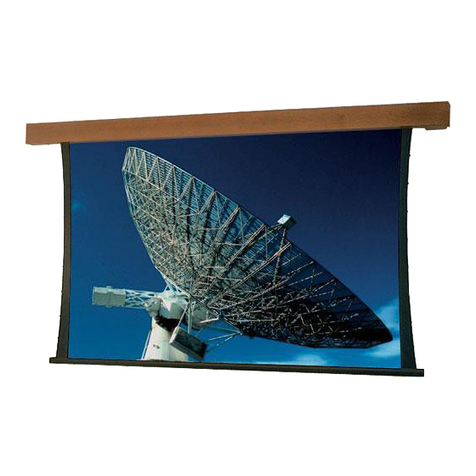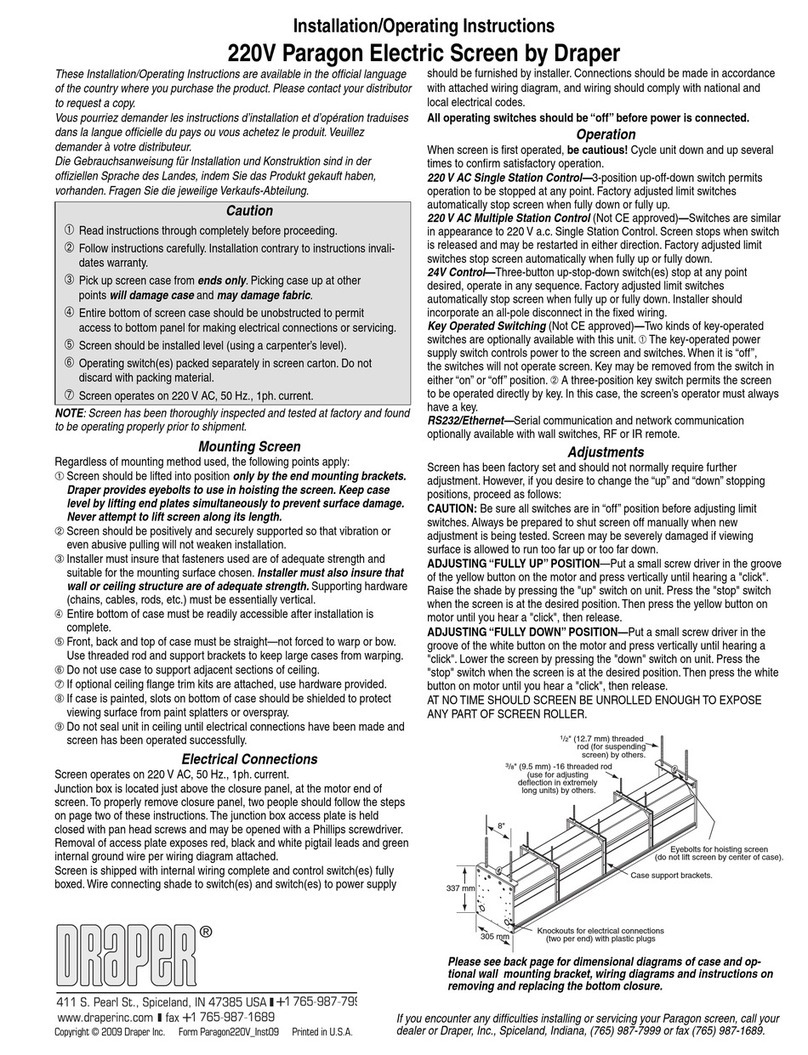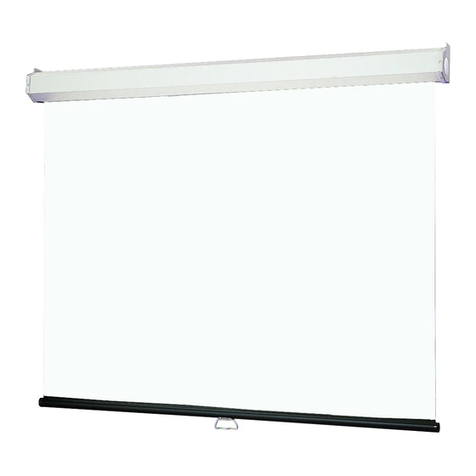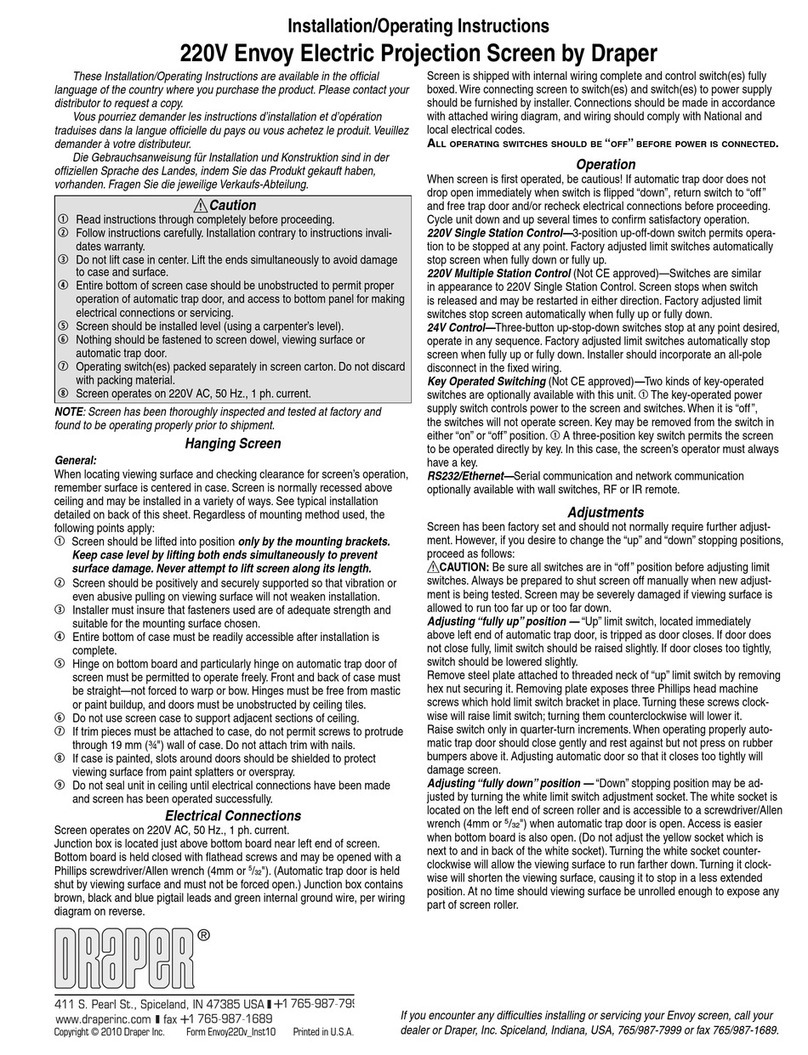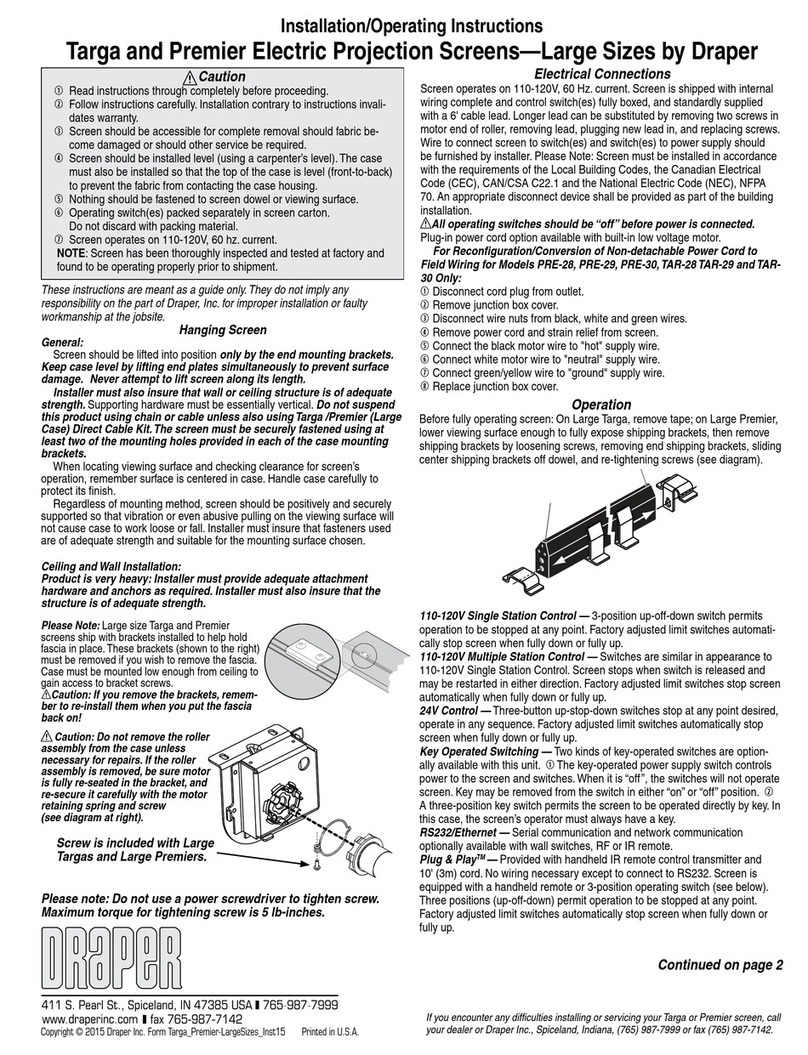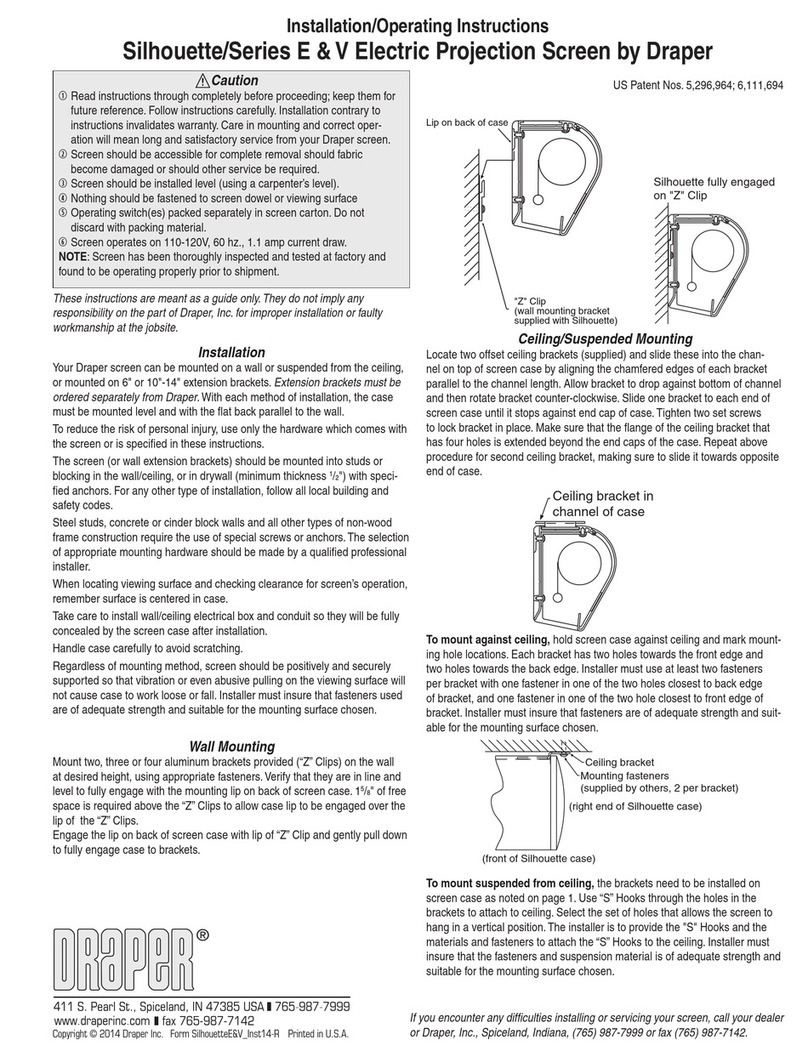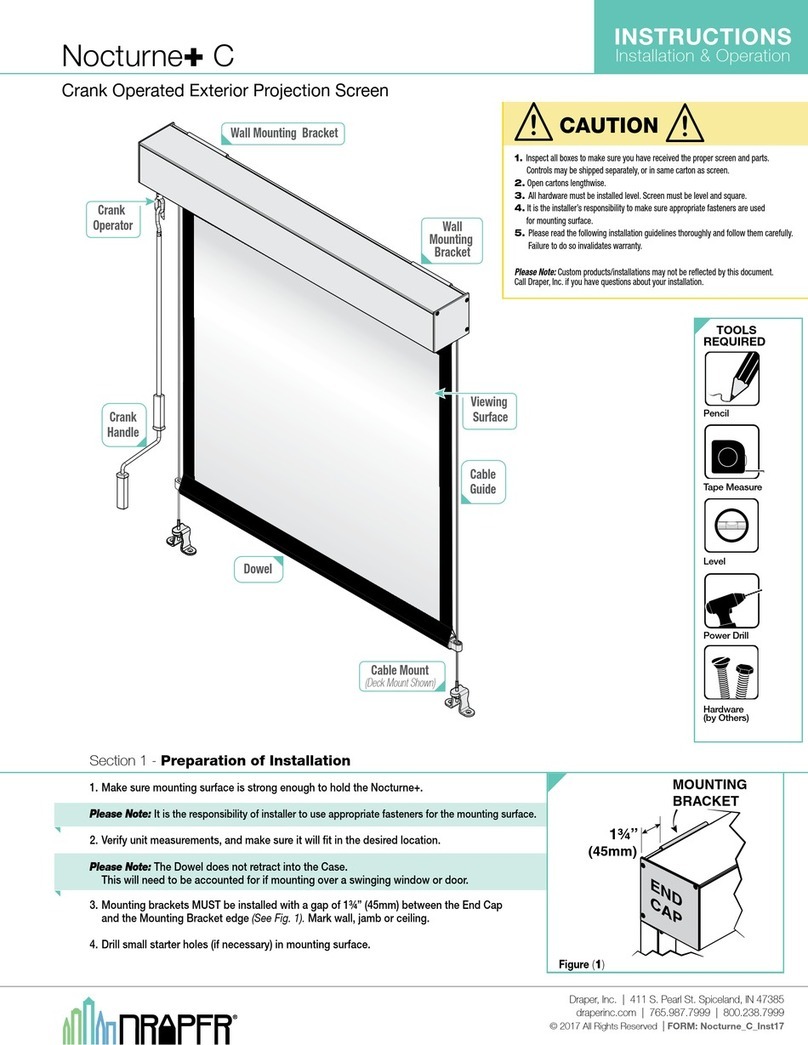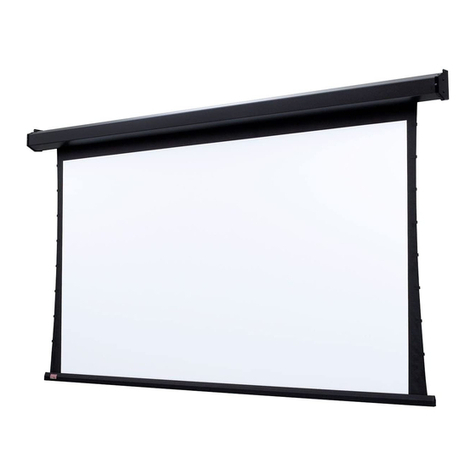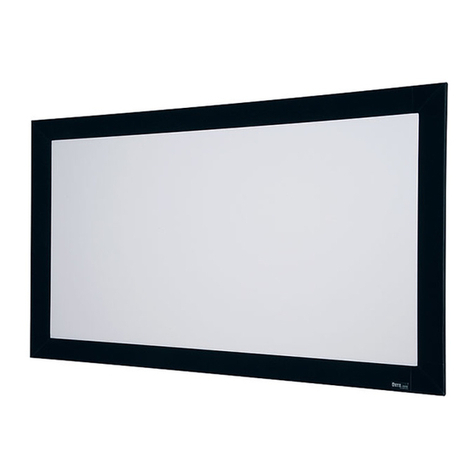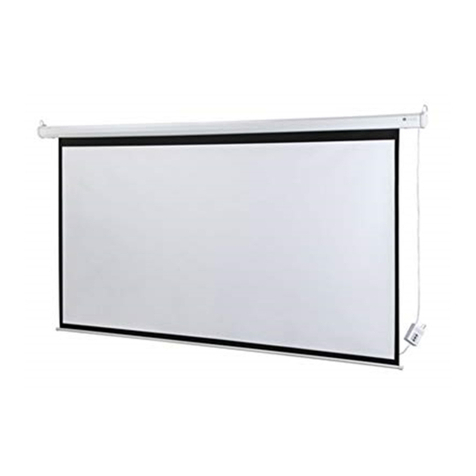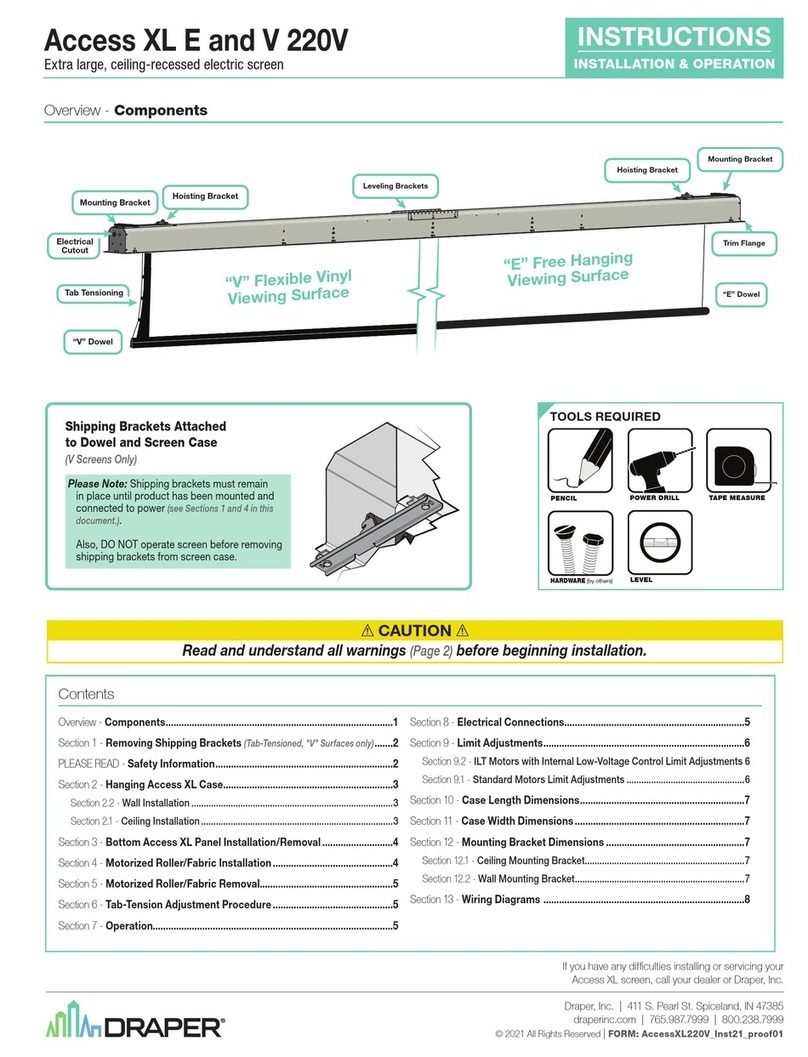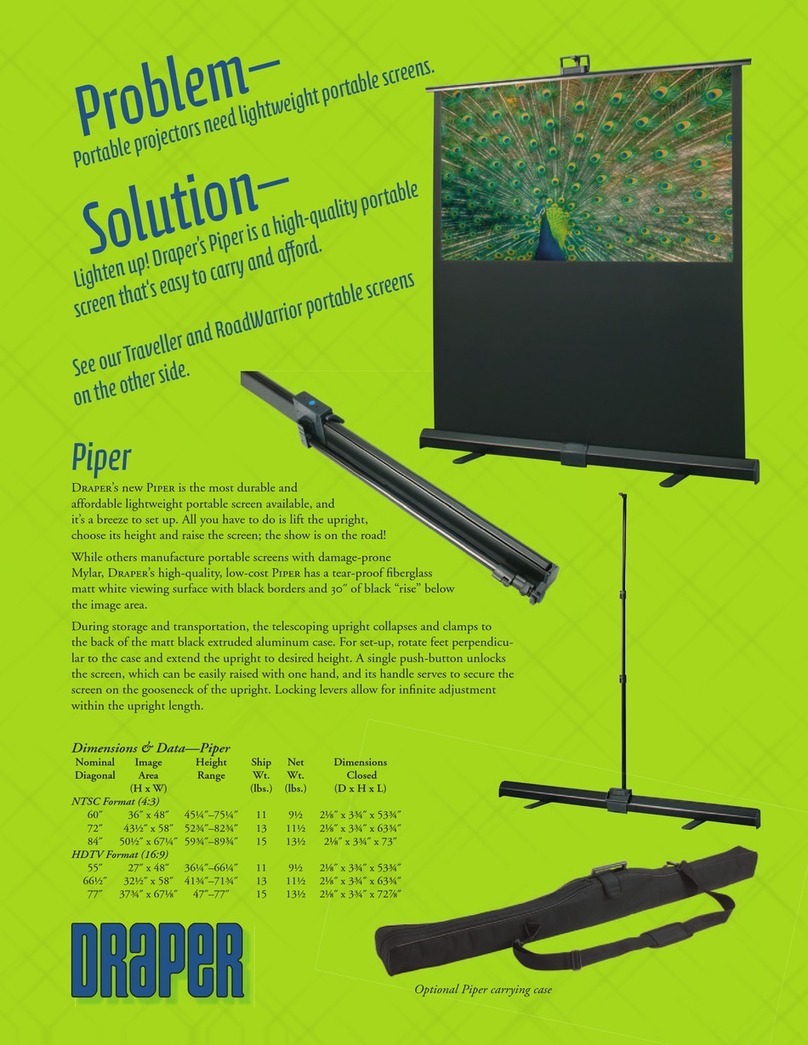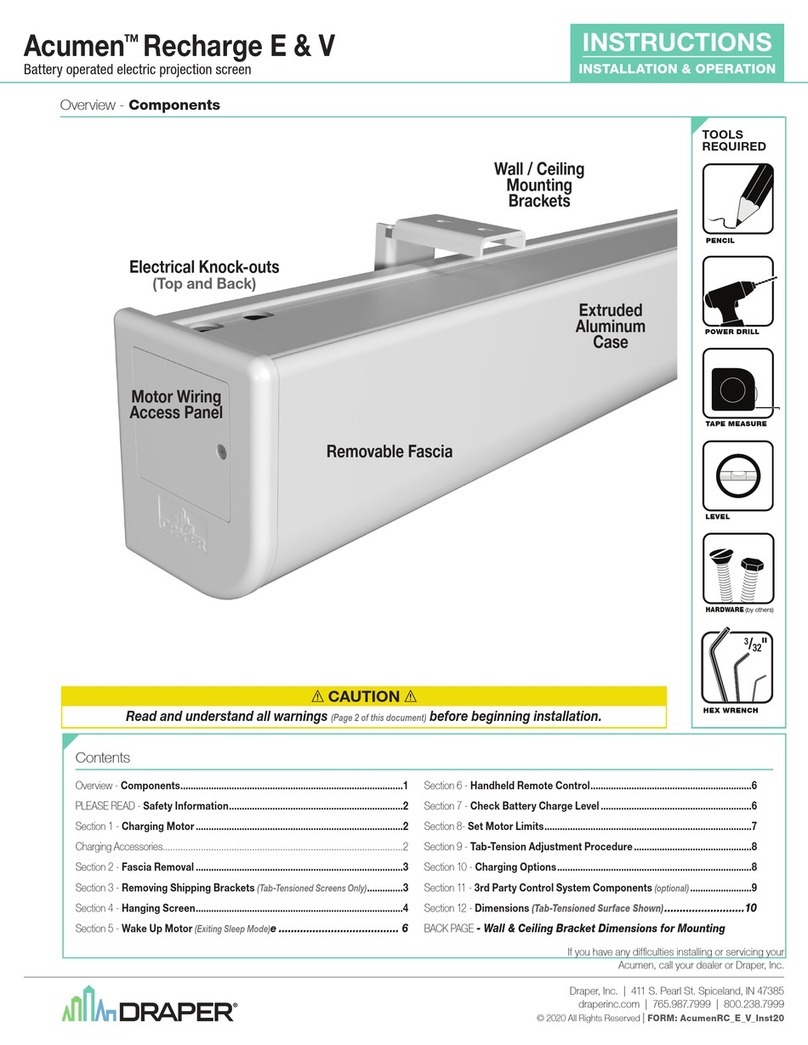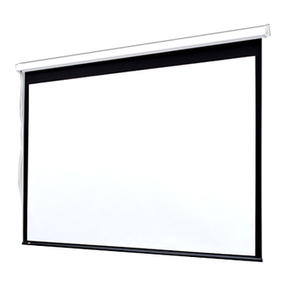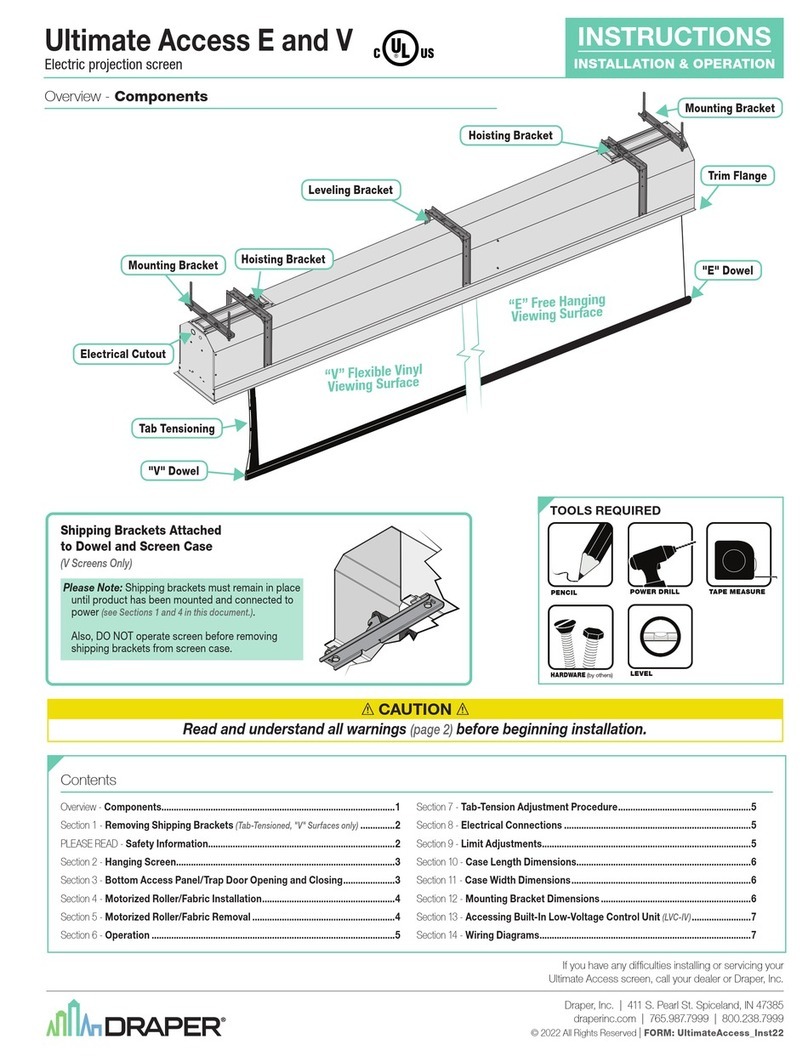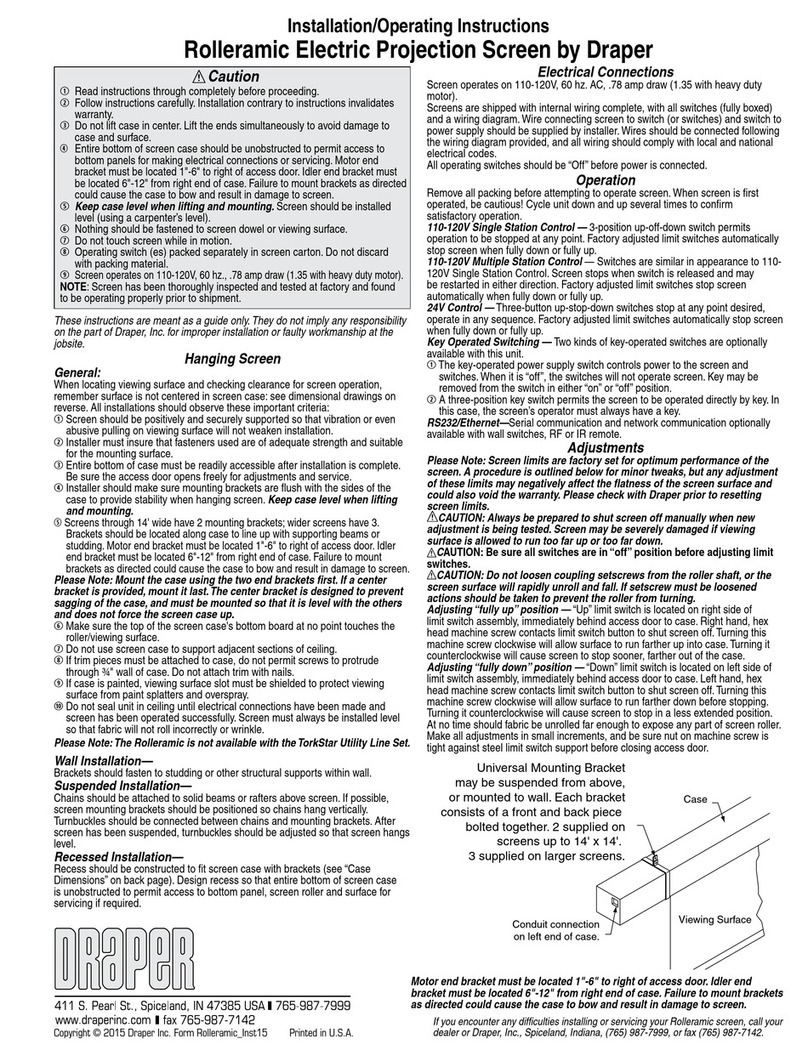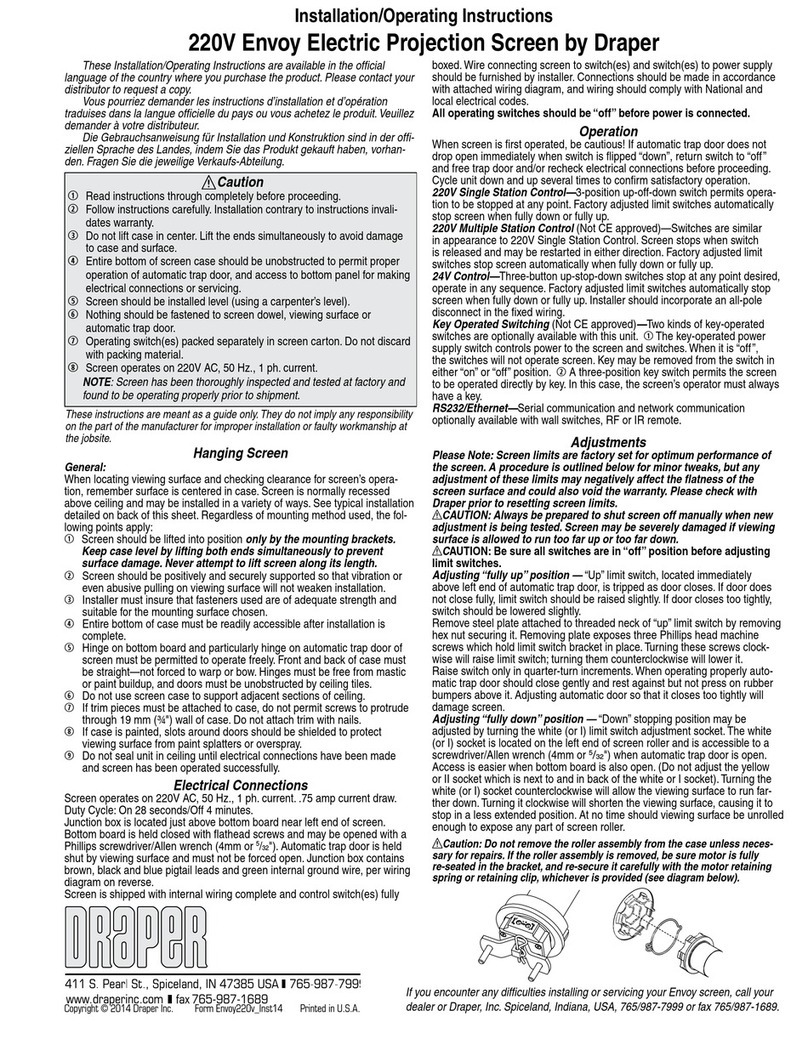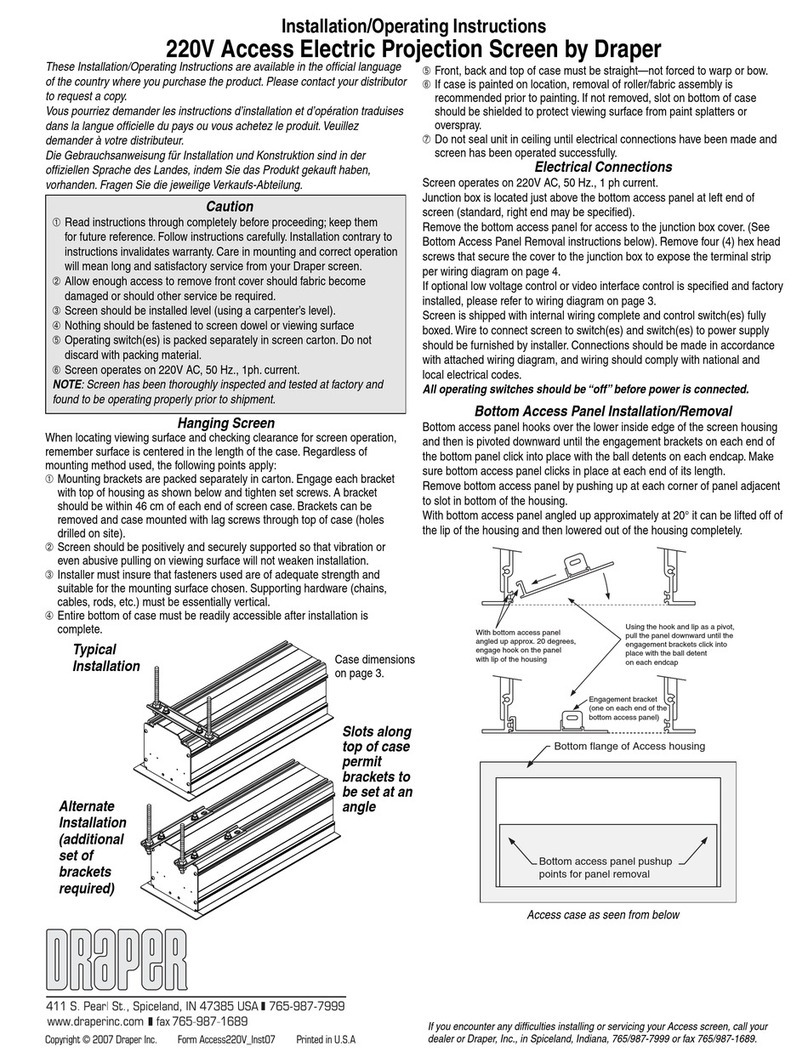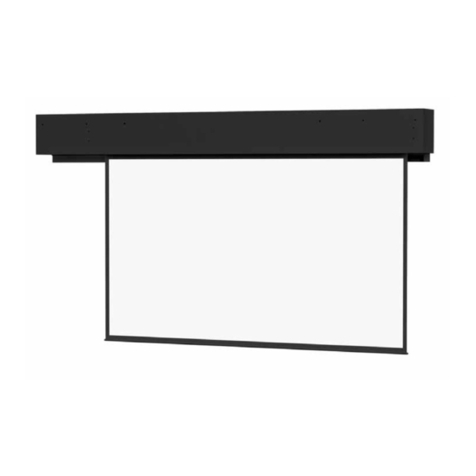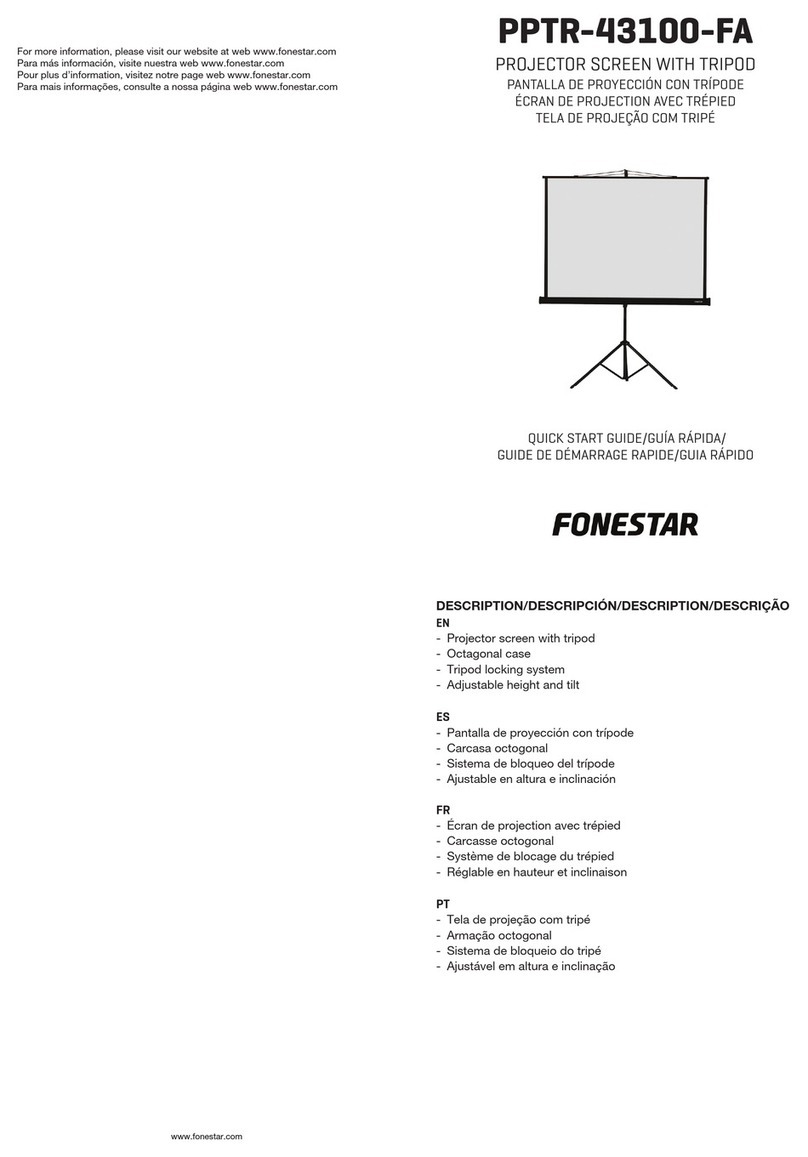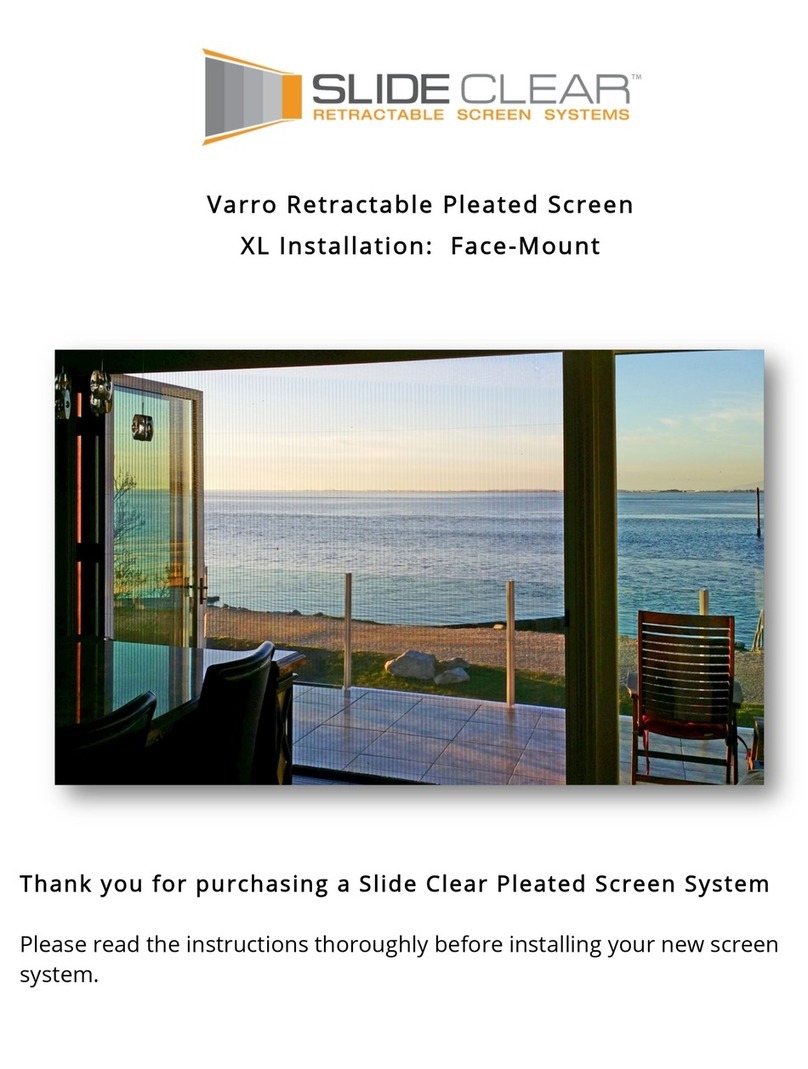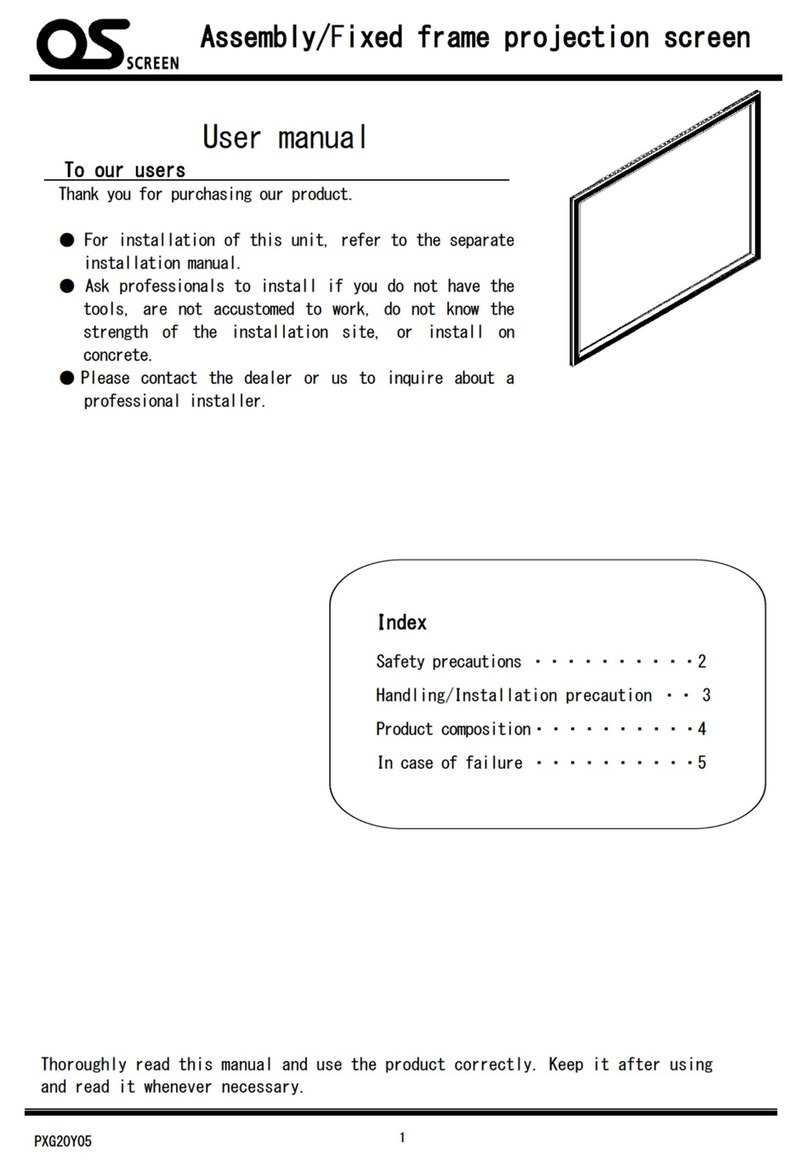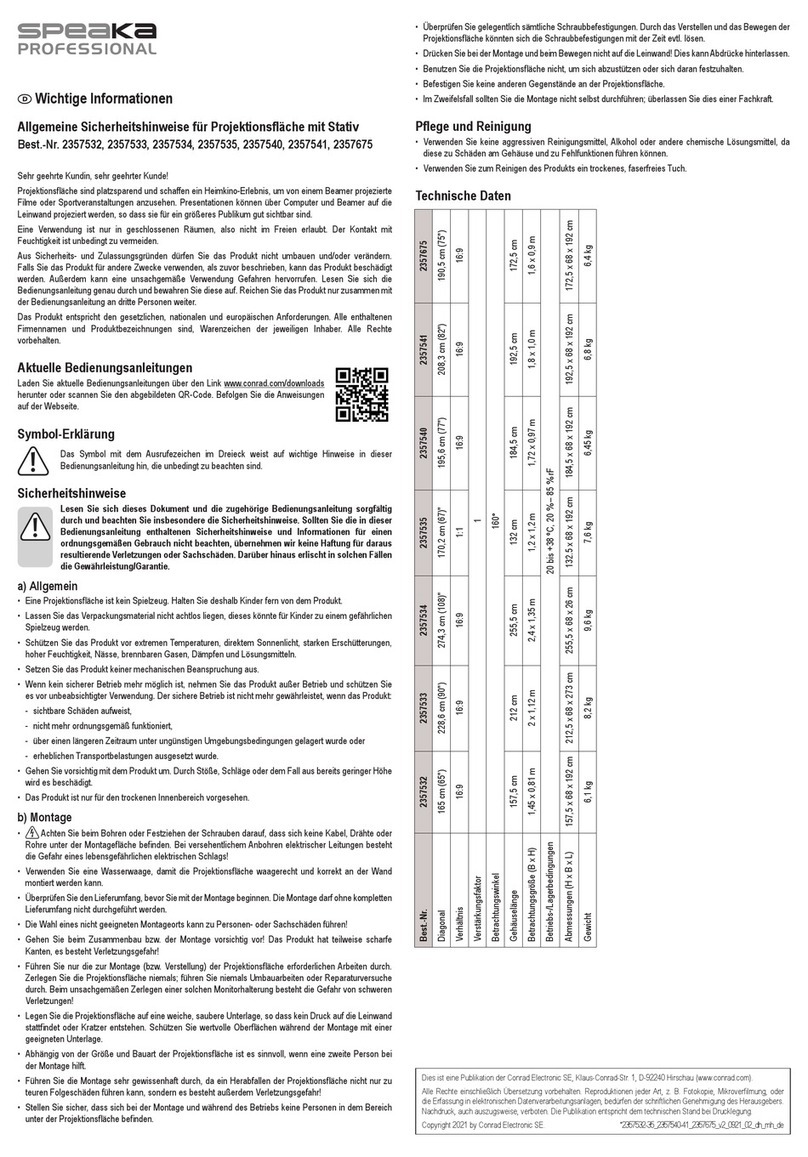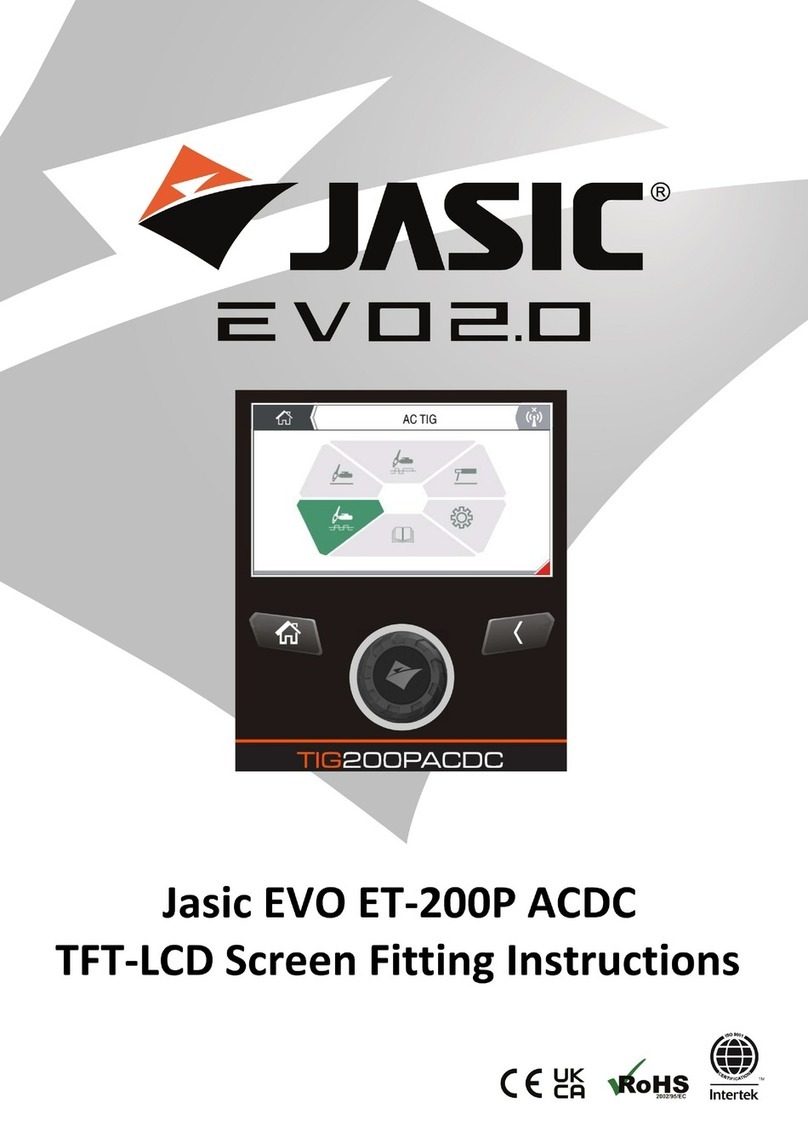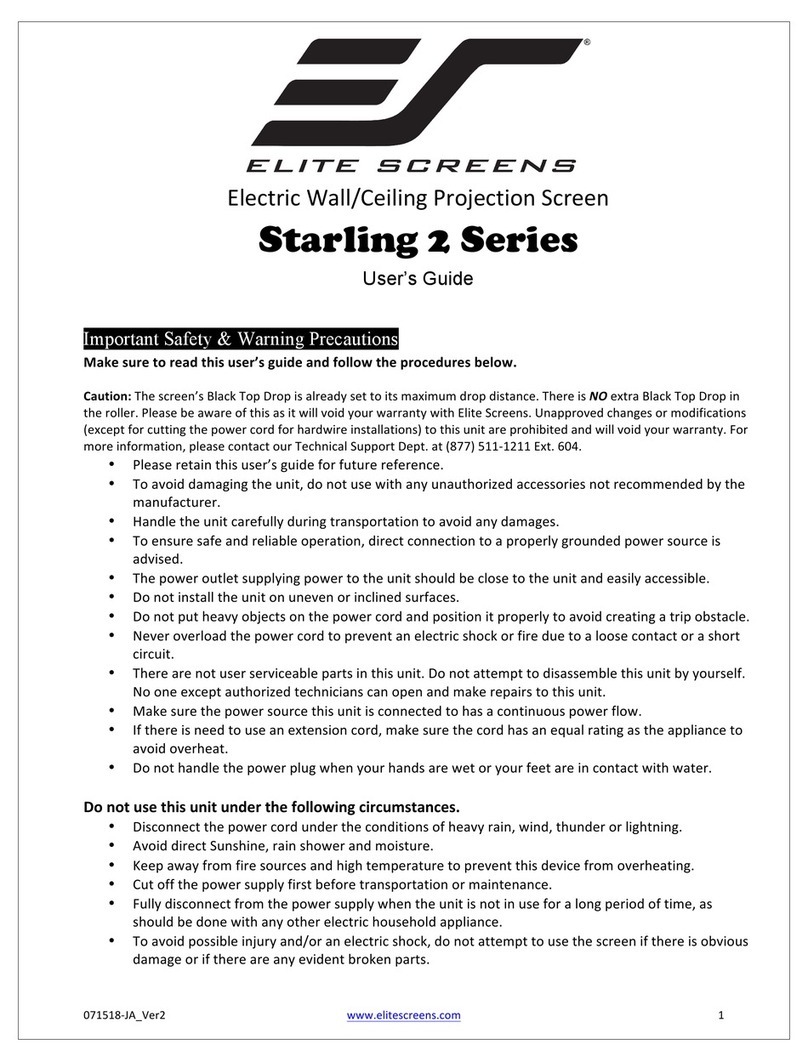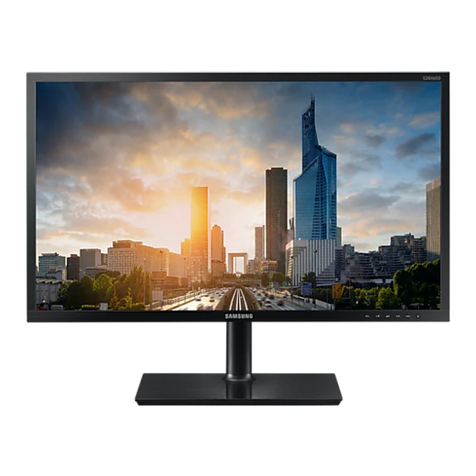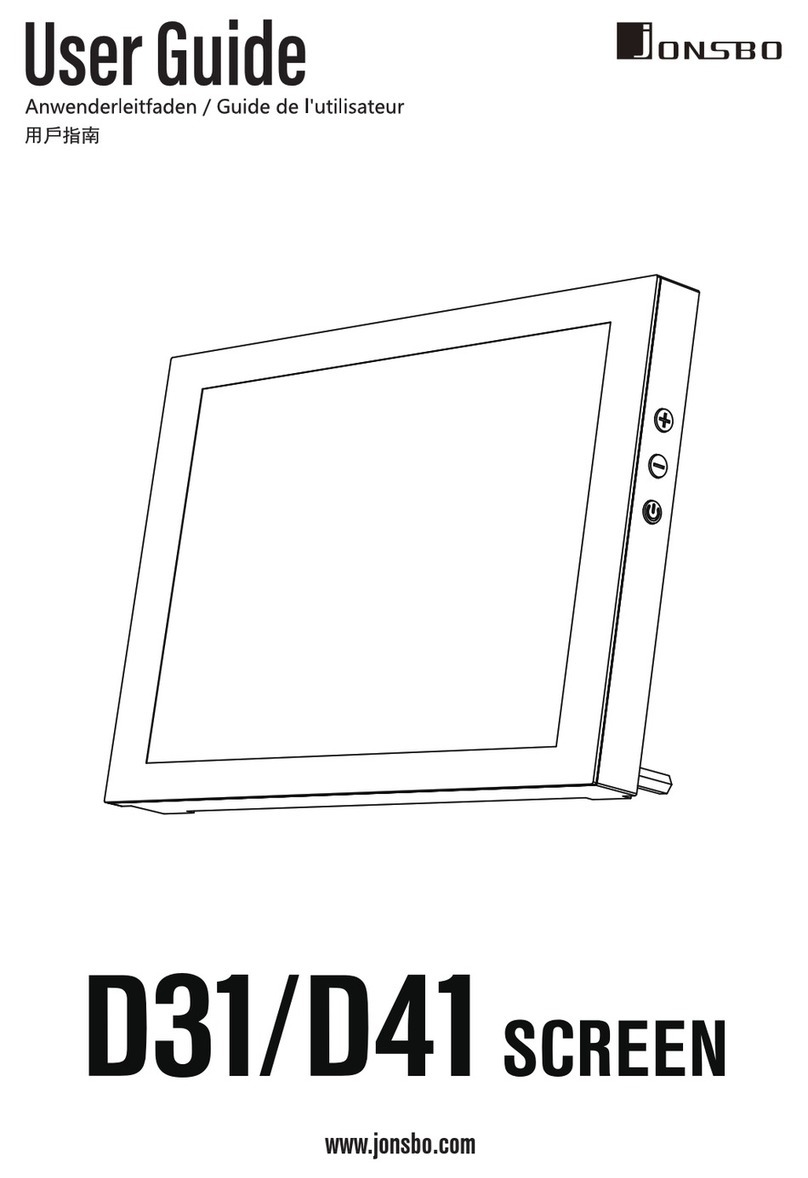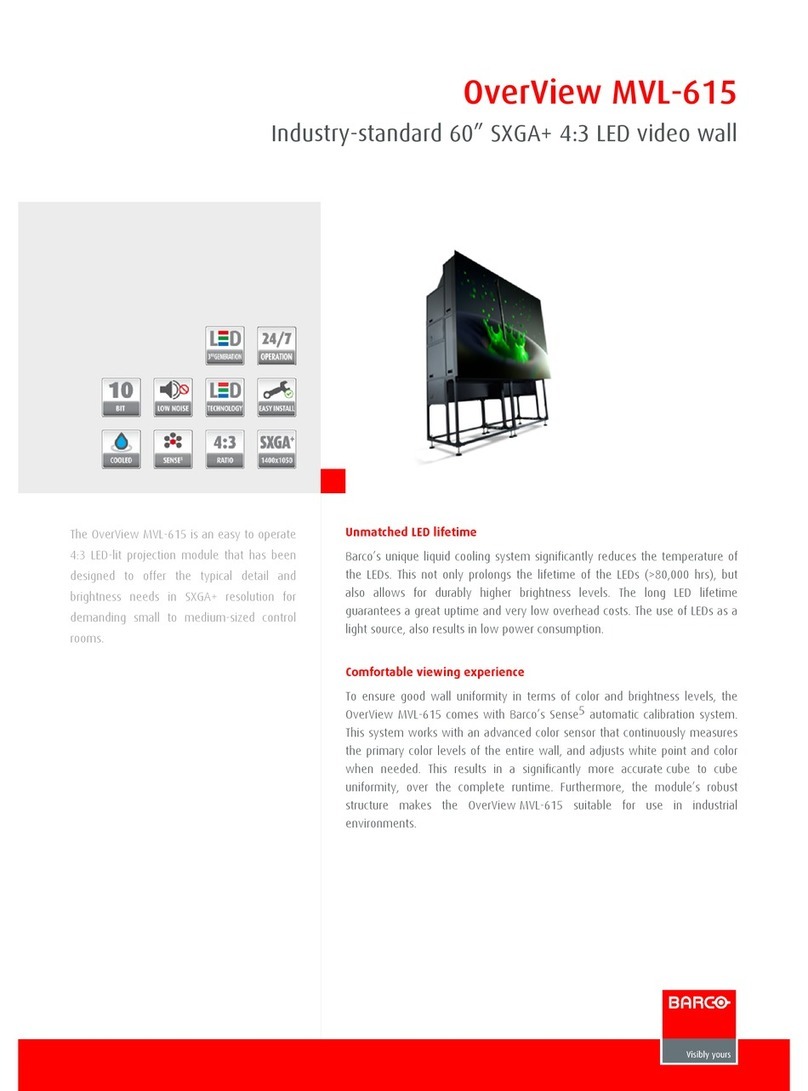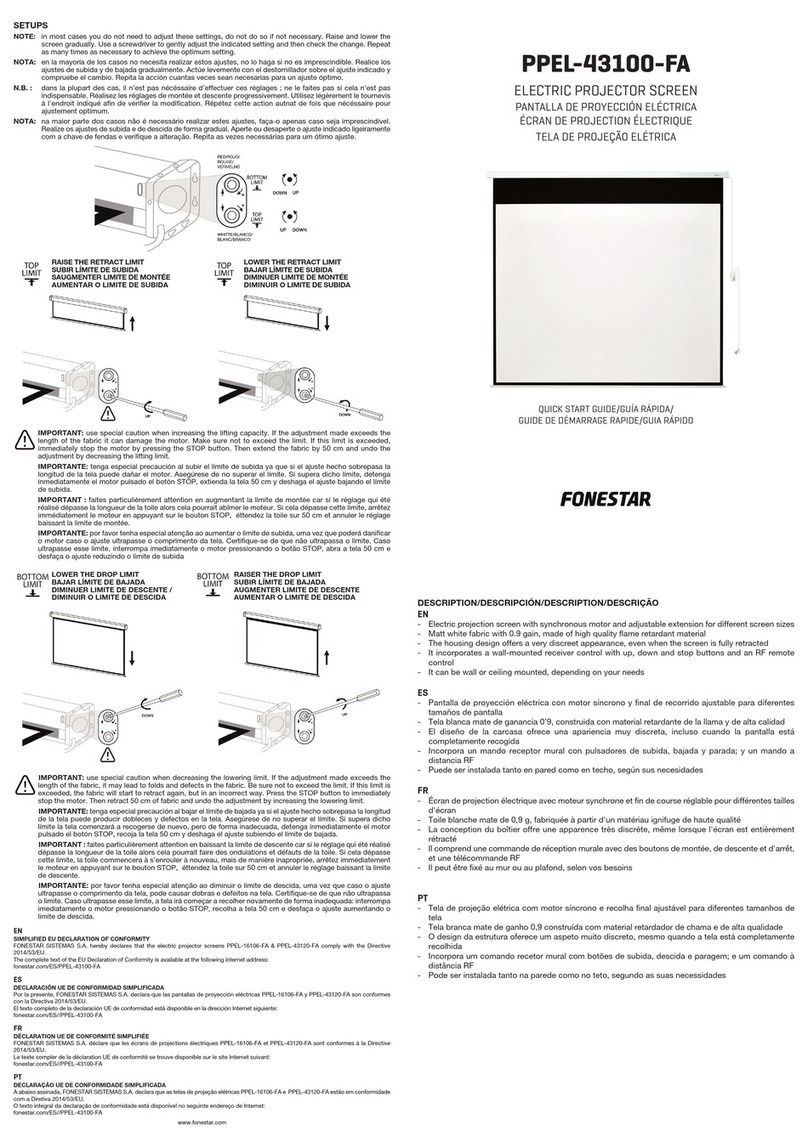
Installation/Operating Instructions
220V Ultimate Access Electric Projection Screen by Draper
Copyright © 2013 Draper Inc. Form UltimateAccess220V_Inst13 Printed in U.S.A.
Hanging Screen
When locating viewing surface and checking clearance for screen’s operation,
remember surface is centered in the length of the case.
Screen is normally recessed above ceiling and may be installed in a variety
of ways. See typical installations detailed on page 3. Regardless of mounting
method used, the following points apply:
1Mounting brackets are packed separately in carton. Engage each
bracket with top of housing as shown below and tighten set screws. A
bracket should be within 46 cm from each end of screen case. Brackets
can be removed and case mounted with lag screws through top of case
(holes drilled on site).
2Screen should be positively and securely supported so that vibration or
even abusive pulling on viewing surface will not weaken installation.
3Installer must insure that fasteners used are of adequate strength and
suitable for the mounting surface chosen.
4Entire bottom of case must be readily accessible after installation is
complete.
Caution
1Read instructions through completely before proceeding.
2Follow instructions carefully. Installation contrary to instructions
invalidates warranty.
3Entire bottom of screen case should be unobstructed to permit
access to bottom panel for electrical connections or servicing.
4Screen should be installed level (using a carpenter’s level).
5Nothing should be fastened to screen dowel or viewing surface.
6Operating switch(es) and mounting brackets are packed separately
in screen carton. Do not discard with packing material.
7Screen operates on 220 V AC, 50 Hz. current.
NOTE: Screen has been thoroughly inspected and tested at factory and
found to be operating properly prior to shipment.
Caution: Beware of pinch
points along closure
Electrical Connections
Screen operates on 220 V AC, 50 Hz. current.
Junction box is located just above the bottom access panel at left end of
screen.
Open the access panel/trap door for access to the junction box cover. (See
bottom access panel/trap door opening and closing instructions below).
Remove two (2) hex head screws that secure the cover to the junction box to
expose the brown, black, and blue pigtail leads and the green ground wire per
wiring diagram on page 4.
If optional low voltage control or video interface control is specified and factory
installed, please refer to wiring diagram on page 4.
Screen is shipped with internal wiring complete and control switch(es) fully
boxed. Wire to connect screen to switch(es) and switch(es) to power supply
should be furnished by installer. Connections should be made in accordance
with attached wiring diagram, and wiring should comply with national and
local electrical codes.
All operating switches should be “off” before power is connected.
These Installation/Operating Instructions are available in the official language
of the country where you purchase the product. Please contact your distributor
to request a copy.
Vous pourriez demander les instructions d’installation et d’opération traduises
dans la langue officielle du pays ou vous achetez le produit. Veuillez
demander à votre distributeur.
Die Gebrauchsanweisung für Installation und Konstruktion sind in der
offiziellen Sprache des Landes, indem Sie das Produkt gekauft haben,
vorhanden. Fragen Sie die jeweilige Verkaufs-Abteilung.
If you encounter any difficulties installing or servicing your Ultimate Access screen, call
your dealer or Draper, Inc., in Spiceland, Indiana, 765/987-7999 or fax 765/987-1689.
®
Bottom Access Panel/Trap Door Opening & Closing
After screen case has been mounted, remove the dowel shipping brackets
from dowel if provided. A spring latch at each end of the trap door holds
this assembly closed. In some screens there will also be a spring latch
near the center of the case. To gain access to inside of screen case, disen-
gage spring latch at each end of the case (and near the center of the case, if
applicable) by sliding the latch lever towards the center of screen case, then
pull down slightly on the trap door assembly. The latch levers are somewhat
concealed from view. Locate these with the trap door open by feeling for the
vertical latch lever above the door about 8 cm from case endcaps and near
the center of the case.
The assembly will swing down, opening about 135°. Pivot the prop arms at
each end of the trap door assembly towards the ends of screen case. Prop
arms engage with a hole in each endcap to hold the trap door assembly fully
open. To close the trap door assembly disengage prop arms from endcaps
and pivot these over the access panel. Swing the trap door assembly upward,
stopping just before the latch levers hit the bottom flanges of the endcaps
(and center of case where appropriate). Pull levers of latches towards center
of screen case to allow the trap door assembly to be pivoted to its closed po-
sition. Make sure that the spring latch levers engage fully with case endcaps
(and center of case where appropriate).
Typical Installation
Alternate
Installation
(additional
set of brack-
ets required
but not in-
cluded)
Slots along top of case permit
brackets to be set at an angle
Case dimensions
on page 4.
Dowel
Shipping
Bracket
Remove shipping brackets
before operating screen.
5The bottom access panel, trap door, and lower edge of the case are
joined with continuous hinge joints and must operate freely. Front and
back of case must be straight–not forced to warp or bow. Hinge joints
must be free of mastic or paint build up, and trapdoor and access panel
must be unobstructed by ceiling tiles.
6If case is painted on location, removal of roller/fabric assembly is
recommended prior to painting. If not removed, slots on bottom of case
should be shielded to protect viewing surface from paint splatters or
overspray.
7 Do not seal unit in ceiling until electrical connections have been made
and screen has been operated successfully.
US Patent Nos. 5,341,241; 6,137,629;
6,421,175; 6,532,109; 6,816,308; 7,559,707
7
/
8
" electrical cutout
These instructions are meant as a guide only. They do not imply any responsibility
on the part of the manufacturer for improper installation or faulty workmanship at
the jobsite.
